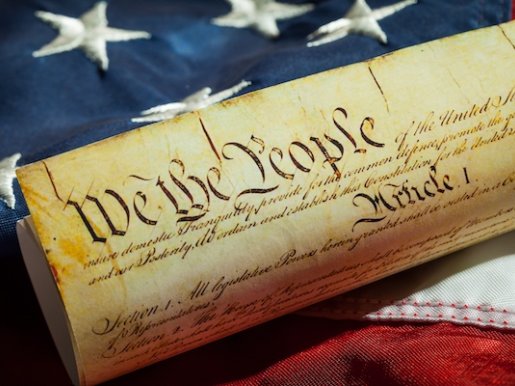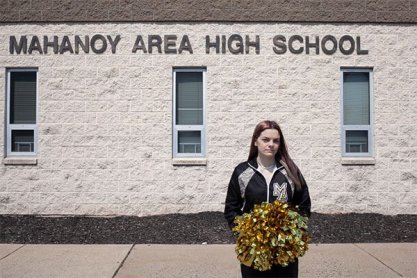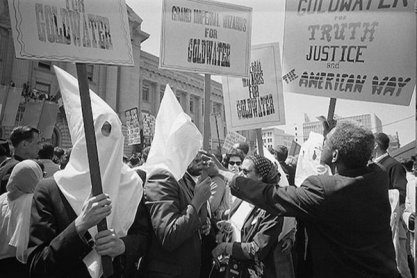Table of Contents
Freedom of Speech

Freedom of speech is one of the fundamental personal freedoms protected by the First Amendment. It allows for you to wear a jacket that says “Fuck the Draft” in a public courthouse or burn the American flag in protest. As FIRE President and CEO Greg Lukianoff said, the cultural norms and assumptions surrounding freedom of speech is what allows us to live in a deeply pluralistic democracy.
The benefits of freedom of speech may seem obvious now, but the United States has only arrived at this point after more than two hundred years of debate.
Before the Bill of Rights
Freedom of speech was hardly a novel idea when the founders drafted the Constitution in 1787. What was novel, however, was to enshrine the idea into law. On Nov. 28, 1787, representatives from the state of Pennsylvania met in Philadelphia to discuss the ratification of the Constitution and formation of a new federal government. Almost immediately, the meeting became contentious over the absence of a bill of rights guaranteeing citizens individual liberties such as freedom of speech, press, and religion.
“In civil government it is certain, that bills of rights are unnecessary and useless,” said James Wilson, a prominent lawyer who attended the Constitutional Convention earlier that year and would later serve on the Supreme Court. “Virginia has no bill of rights, and will it be said that her constitution was less free?”
Irish-American politician John Smilie scoffed at the idea of not including a bill of rights establishing the inherent rights of citizens, and, therefore, limiting the powers of government.
“Hence, Sir,” Smilie responded to Wilson, “it will be impracticable to stop the progress of tyranny, for there will be no check but the people . . . At present there is no security, even for the rights of conscience, and under the sweeping force of the [Supremacy Clause], every principle of a bill of rights, every stipulation for the most sacred and invaluable privileges of man, are left to the mercy of government.”
Despite objections, the Constitution was ratified by the 13 states in 1787 without a bill of rights attached. Debate continued for four years until, on Dec. 15, 1791, Virginia became the 11th state to ratify the Bill of Rights, which codified individual liberties into our nation’s founding document.
Freedom of speech in the courts
Even though freedom of speech became established law in 1791, it would take more than one hundred years for the legal principles of freedom of speech to coalesce into coherent jurisprudence. John Adams used the Alien and Sedition Acts of 1798 — which outlawed “any false, scandalous and malicious writing or writings” against the executive branch — to stifle criticism of his administration, and Abraham Lincoln curtailed freedom of speech and press during the Civil War. Freedom of speech as we know and enjoy it today was not widely recognized by either the government or the courts.

Modern jurisprudence surrounding freedom of speech would not begin to take shape until 1919. In Schenck v. United States, the Supreme Court upheld the conviction of socialist Charles Schenck under the Espionage Act of 1917. (Numerous convictions under the Espionage Act would make their way to the Supreme Court, including that of socialist presidential candidate Eugene Debs.) Schenck was found guilty of conspiracy for distributing anti-war leaflets that urged people to boycott the draft. The Supreme Court’s opinion in Schenck was the first articulation of the “clear and present danger” test, wherein Justice Oliver Wendell Holmes Jr. infamously wrote “The most stringent protection of free speech would not protect a man in falsely shouting fire in a theatre and causing a panic.”
The problem with the Supreme Court’s ruling in Schenck, as subsequent Supreme Court cases would affirm, is that Schenk’s speech was not calling for violence or even civil disobedience. Rather, his speech was precisely the kind of political expression that decades of subsequent Supreme Court decisions would ultimately uphold.
The government may neither punish citizens for political speech nor compel those same citizens to affirm certain political beliefs. As the Supreme Court ruled in West Virginia v. Barnette (1943), a state law that compelled school children to recite the Pledge of Allegiance was ruled to be an unconstitutional violation of the First and Fourteenth Amendments.
In the late 1960s, the Warren court issued numerous rulings that vastly expanded the range of speech protected under the First Amendment. In the 1967 case Keyishian v. Board of Regents, the Supreme Court invalidated a New York law prohibiting the employment of public school and university teachers who belong or had belonged to “subversive” groups such as the Communist Party. In 1968, the Supreme Court ruled in Pickering c. Board of Education of Township High School District 205, Will County that school board officials violated the First Amendment rights of Illinois public school teacher Marvin Pickering, who was fired for writing a letter critical of the school administration to a local newspaper.
“The problem in any case,” the Supreme Court wrote, “is to arrive at a balance between the interests of the teacher, as a citizen, in commenting upon matters of public concern and the interest of the State, as an employer, in promoting the efficiency of the public services it performs through its employees.”
The next year, in Tinker et al. v. Des Moines Independent Community School District, the Supreme Court established a speech-protective standard for students after the school district prohibited students from wearing black armbands in protest of the Vietnam War. In Tinker, the Supreme Court ruled, school officials cannot prohibit student expression unless they can reasonably forecast that the student speech will cause a substantial disruption of school activities or invade the rights of others.

Also in 1969, the Supreme Court ruled in Stanley v. Georgia that the First and Fourteenth Amendments protect a person’s “private possession of obscene matter” from criminal prosecution. The Supreme Court notes that the state, although possessing broad authority to regulate obscene material, cannot punish private possession of such in an individual’s own home.
The decades that followed saw even broader protections for freedom of speech and expression, including the right to burn the American flag in protest, which the Supreme Court ruled Texas v. Johnson (1989) to be protected speech.
More recently, the Roberts court ruled in Mahanoy Area School District v. B.L. (2021) that public schools have no right to regulate student speech happening off campus. As FIRE wrote of Mahanoy in its amicus brief to the Supreme Court: “If public grade school administrators may surveil and punish off-campus student expression far beyond the school-house gate, a generation of Americans will be taught a corrosive, illiberal lesson about the illusory value of their constitutional freedoms.”
Freedom of speech limitations
Under modern jurisprudence, the First Amendment protects the vast majority of speech and expression, but there are limitations to freedom of speech that have been carefully honed over decades of case law into a handful of narrow categories of speech that are not protected. These include true threats and intimidation, incitement, harassment, and other unlawful conduct.
True threats
In 2003, the Supreme Court in Virginia v. Black defined true threats as “statements where the speaker means to communicate a serious expression of an intent to commit an act of unlawful violence to a particular individual or group of individuals.” The Supreme Court also held that speech becomes unprotected intimidation when it is “a type of true threat, where a speaker directs a threat to a person or group of persons with the intent of placing the victim in fear of bodily harm or death.”

These definitions place emphasis on the actual intent and seriousness of the threat. This allows the authorities to take things like bomb threats seriously while also limiting the government’s ability to publish clearly hyperbolic expression, such as the infamous photo of Kathy Griffin holding a depiction of Donald Trump’s decapitated head.
Incitement
Speech also becomes unprotected when it is used to promote imminent violence or lawless action. This exception, also known as incitement, originated from the 1969 Supreme Court case Brandenburg v. Ohio. In that case, the Supreme Court distinguished between mere advocacy of lawless behavior — which is, for example, a common lyrical attribute in the music of Rage Against the Machine — and incitement to “imminent lawless action.” In order for speech to lose protected status, the Supreme Court ruled that there had to be evidence that the language in question is being used to encourage immediate lawlessness and that illegal action is likely to take place, for example, if an incendiary public speaker points at a specific building and tells an angry mob to go burn it down while handing out matches.
Four years later, the Supreme Court applied this standard to a case involving an anti-war protester on a college campus. Gregory Hess had been arrested for disorderly conduct after he shouted that protesters would “take the fucking street later.” The Supreme Court overturned his conviction in Hess v. Indiana (1973) on the grounds that Hess’s speech “amounted to nothing more than advocacy of illegal action at some indefinite future time.”
Unlawful harassment/conduct
“Unlawful harassment” was best articulated by the Supreme Court in the 1999 case Davis v. Monroe County Board of Education. The decision established what is known as the “Davis standard” for student-on-student harassment: targeted, discriminatory conduct that is “so severe, pervasive, and objectively offensive, and that so undermines and detracts from the victims’ educational experience, that the victim-students are effectively denied equal access to an institution’s resources and opportunities.”
In short, isolated pure speech or expression is unlikely to constitute harassment on its own. To qualify as peer harassment, speech must be targeted, discriminatory, and typically part of a larger pattern of behavior that hinders the educational experience of the targeted individual.
Lastly, speech is not protected when it involves unlawful conduct such as vandalism, destruction of property, child pornography, perjury, black mail, or defamation.
Other unlawful conduct may include certain kinds of disruptions like shout-downs, grabbing microphones, illegally recording others, blocking entrances, and related activity. Some of these examples are tactics commonly employed by protesters as forms of civil disobedience. However, keep in mind that while civil disobedience can be a vehicle for change, it is — by definition — not protected speech or activity and that participating in such activity can lawfully result in punishment.
For more information on the history of freedom of speech and list of the most important Supreme Court cases, check out FIRE’s History of Free Speech interactive course at Learn with FIRE.